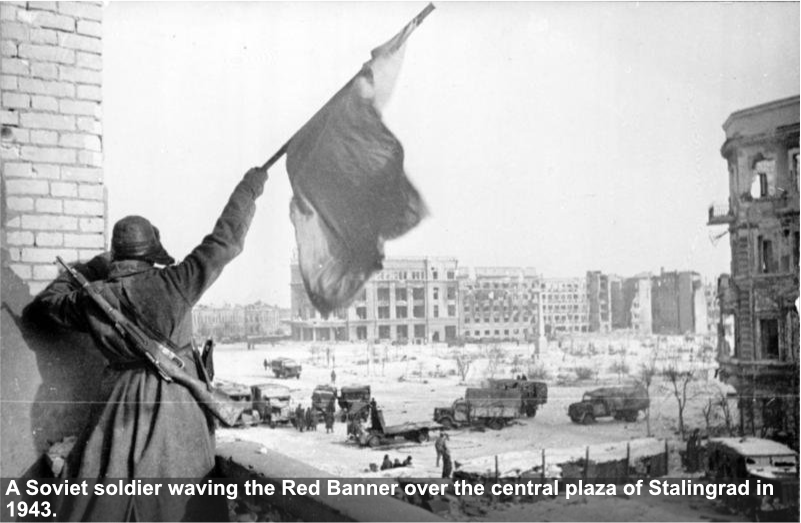Stalingrad
Episode #9 of the course Ten turning points of World War II by Patrick Allitt
No confrontation in World War II cost more lives than the Battle of Stalingrad, between September 1942 and February 1943. Fighting from house to house and street to street, along with months of bombing raids and artillery barrages, ultimately killed an estimated one million people, soldiers, and civilians. The battle ended with the humiliating surrender of an entire German army.
After the painful winter of 1941-42, which taught Hitler his first hard lesson about the difficulty of conquering Russia, the German advance resumed. Instead of attacking heavily defended Moscow, he ordered his generals to move on the fertile southern Ukraine and the Caucasus, source of Soviet oil. By securing both, he believed that he could starve the Soviet people and their armies into submission. To get to the oil fields, however, his forces must cross the Volga River. Stalingrad, named after the Soviet leader, stood squarely in their way. An industrial city and port, its name gave it a symbolic significance greater than its military value. Stalin ordered that it must never surrender.
The German advance in the summer of 1942 made rapid progress at first but was stopped in the western suburbs of the city. General Vasily Chuikov organized Stalingrad’s defense while General Georgy Zhukov planned a daring counter-attack. The street fighting—hand to hand, often with bayonets, grenades, and pistols—began in hot weather; combatants reported a horrifying smell of decaying corpses in the rubble all around them. Soviet reinforcements were sometimes forced into the fighting without even basic equipment. They were simply told that they must take weapons from the bodies they would find on the ground. Gradually, the weather turned, and by November, the deadly winter was setting in.
Zhukov chose this moment to counterattack. Rather than attempt a frontal assault against the German forces, he attacked weaker Romanian divisions that guarded the Germans’ flanks. Large Soviet forces attacked from north and south, 30 miles west of the city, and were able to link up, leaving the German Sixth Army trapped and encircled. Military logic suggested that General Friedrich Paulus, the German commander, should fight his way out of this trap, but Hitler strictly forbade him to do so.
Instead, as the winter intensified, Paulus became dependent on airlifts bringing supplies to his troops. Despite Göring’s claims, his Luftwaffe could not bring in sufficient food, fuel, and ammunition to keep the army at fighting strength. Bad weather often restricted flights. Frostbite, equipment failure, malnutrition, and the knowledge that they were trapped all undermined the soldiers’ morale. An attempt to break through the encirclement and relieve Paulus, led by another German general, Erich von Manstein, failed.
Soviet pressure squeezed the German perimeter tighter with each passing day, eventually taking the airfields into which relief supplies had been coming. With thousands of wounded men, no medical supplies, and no food, Paulus asked Hitler to be allowed to surrender. Hitler refused and added pressure by promoting him to the rank of Field Marshal, knowing that if Paulus surrendered now, he would be the highest-ranking German officer ever to yield. But with nothing left and no hope of relief, Paulus surrendered at the beginning of February 1943, along with over 100,000 men.
Very few of those taken prisoner ever returned to Germany. Most died in Soviet camps of neglect, famine, and epidemic diseases. Some entered the Soviet “gulag” and were still there ten years later. Paulus himself was taken to Moscow, where he made broadcasts in favor of the Soviet Union. The German armies meanwhile began their long retreat, fighting the world’s greatest tank battle at Kursk that summer but rarely regaining lost ground, and then only temporarily. The tide of Hitler’s war had finally turned.
Tomorrow, we will study D-Day, the Anglo-American invasion of Normandy in 1944 that forced the Germans to fight on two major fronts and precipitated the downfall of the Third Reich.
Recommended book
Stalingrad: The Fateful Siege: 1942-1943 by Antony Beevor
Share with friends

